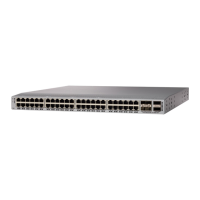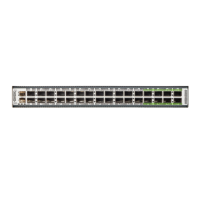Recovering System Restarts
Every process restart generates a syslog message and a Call Home event. Even if the event does not affect
service, you should identify and resolve the condition immediately because future occurrences could cause a
service interruption.
After following the steps, determine the cause and resolution for the restart condition by contacting your
technical support representative and asking the representative to review your core dump.
Note
Before You Begin
The following conditions apply:
•
The system automatically copies the core files to a TFTP server every 4 minutes. This time interval is
not configurable.
•
The copy of a specific core file to a TFTP server can be manually triggered by using the copy
core://module#/pid# tftp://tftp_ip_address/file_name command.
•
If a supervisor failover occurs, the cores might be in the secondary logflash rather than the primary
logflash.
•
The maximum number of times that a process can be restarted is part of the high-availability (HA) policy
for any process. (This parameter is not configurable.) If the process restarts more than the maximum
number of times, the older core files are overwritten.
•
The maximum number of core files that can be saved for any process is part of the HA policy for any
process. (This parameter is not configurable, and it is set to three.)
SUMMARY STEPS
1.
switch# show log | include error
2.
switch# show processes
3.
switch# show process log
4.
switch# show process log pid pid
5.
switch# show system uptime
6.
switch# show cores
7.
switch# copy core: core path
8.
switch# show processes log pid pid
9.
switch# system cores tftp: tftp-path
Cisco Nexus 9000 Series NX-OS Troubleshooting Guide, Release 7.x
19
Troubleshooting Installations, Upgrades, and Reboots
Recovering System Restarts

